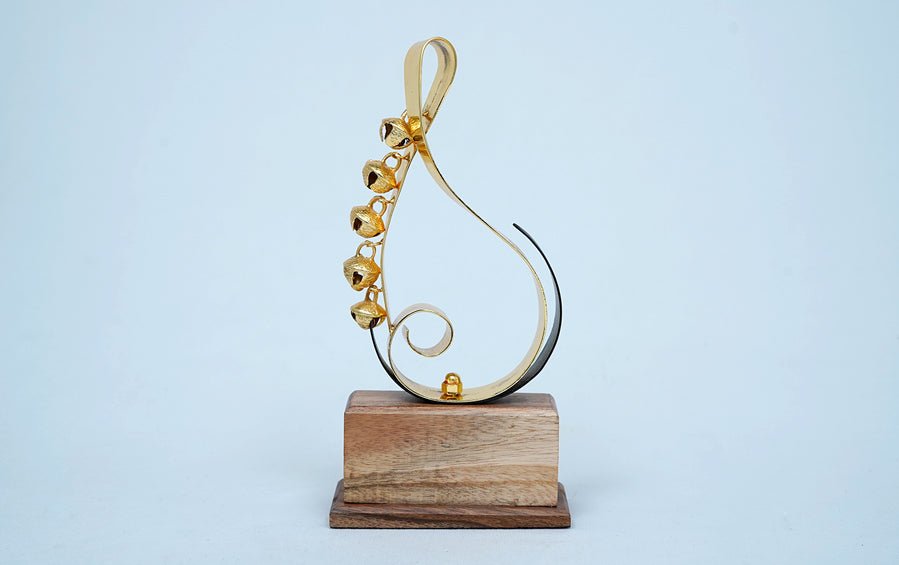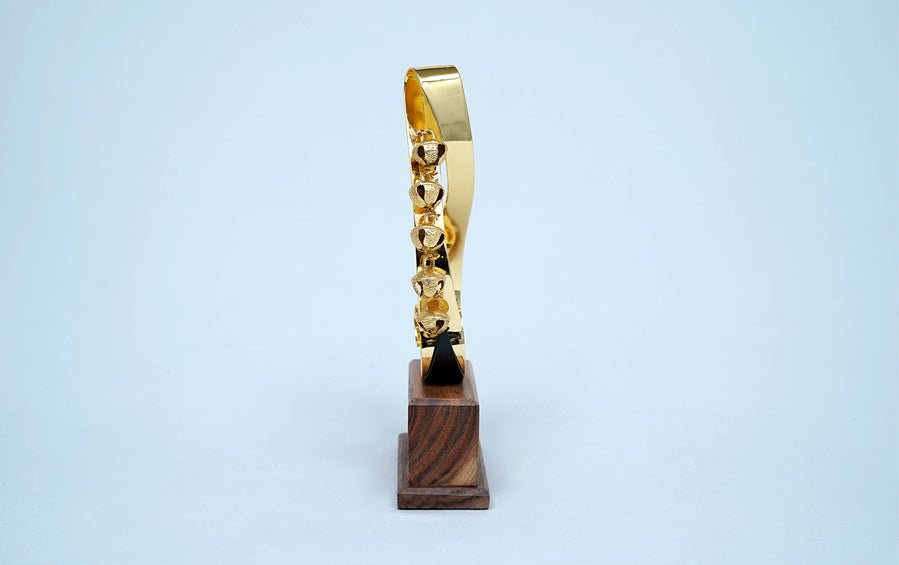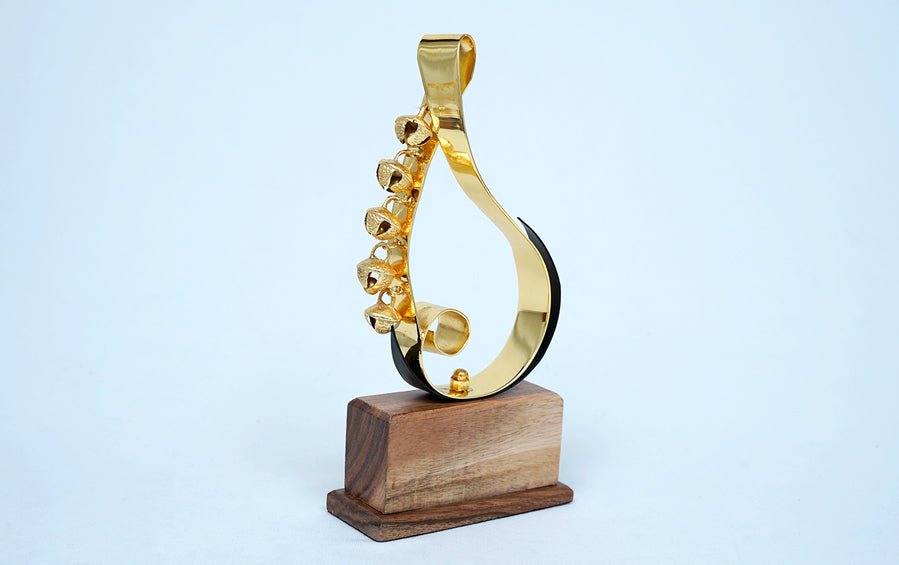Dance and Music Souvenir
This musical note trophy comes with Ghunghroo -ankle bells - the prominent ornament of classical dancers. The idea of tying Ghungroos to the ankles of a dancer to produce beautiful music as well as giving rhythm by the taping feet is ancient and has developed over centuries along with various styles of Indian dances.
This trophy/ souvenir/memento/ award is conferred to recognize one as achievement in a particular arena. This dance-music souvenir has extensive application in various dance/music award ceremonies meant for corporate houses, governmental organizations, and cultural associations. This dance/music award memento is made of iron with brass coating and elegantly mounted on a durable and solid base made of wood.
A perfect gift for a dancer cum musician!
India, as one of the earliest cradles of civilization, has a long and glorious history of art and culture that spans longer than the history of most countries in existence today. Song and Dance in India is varied and diverse due to the many independent regional cultural traditions that make up the country as well as the many religious practices that boast thousands of different deities.
The origin of dancing in Indian folklore is said to have come from the chief deity, Brahma, who inspired the creation of the NatyaShastra, a treatise from which a codified tradition of dance and drama emerged. Dancers would eventually gain such prominence that they performed solely for royalty and it is from this status in culture that dancing has a large part in contemporary Indian cinema.
The music of ancient India has its roots from the many indigenous instruments that gained wide use at the time such as the seven-holed flute and various stringed instruments. The Samaveda, one of the many parts of the Hindu holy text known as the Vedas, is a collection, or Samhita, of hymns and verses that were sung during religious rituals performed by priests named Udgatar.
The ghungroo (ankle bell) is considered very special and are regarded with great respect by the Indian classical dancers. It is regarded as an inseparable part of the Indian classical dancing tradition for many forms of Indian classical dance such as the Bharatanatyam, Kathak, Kuchipudi, Mohiniyattam, etc.
BULK ORDER
| 200 Quantity | 30% OFF |
| 150 Quantity | 25% OFF |
| 100 Quantity | 20% OFF |
| 50 Quantity | 10% OFF |





